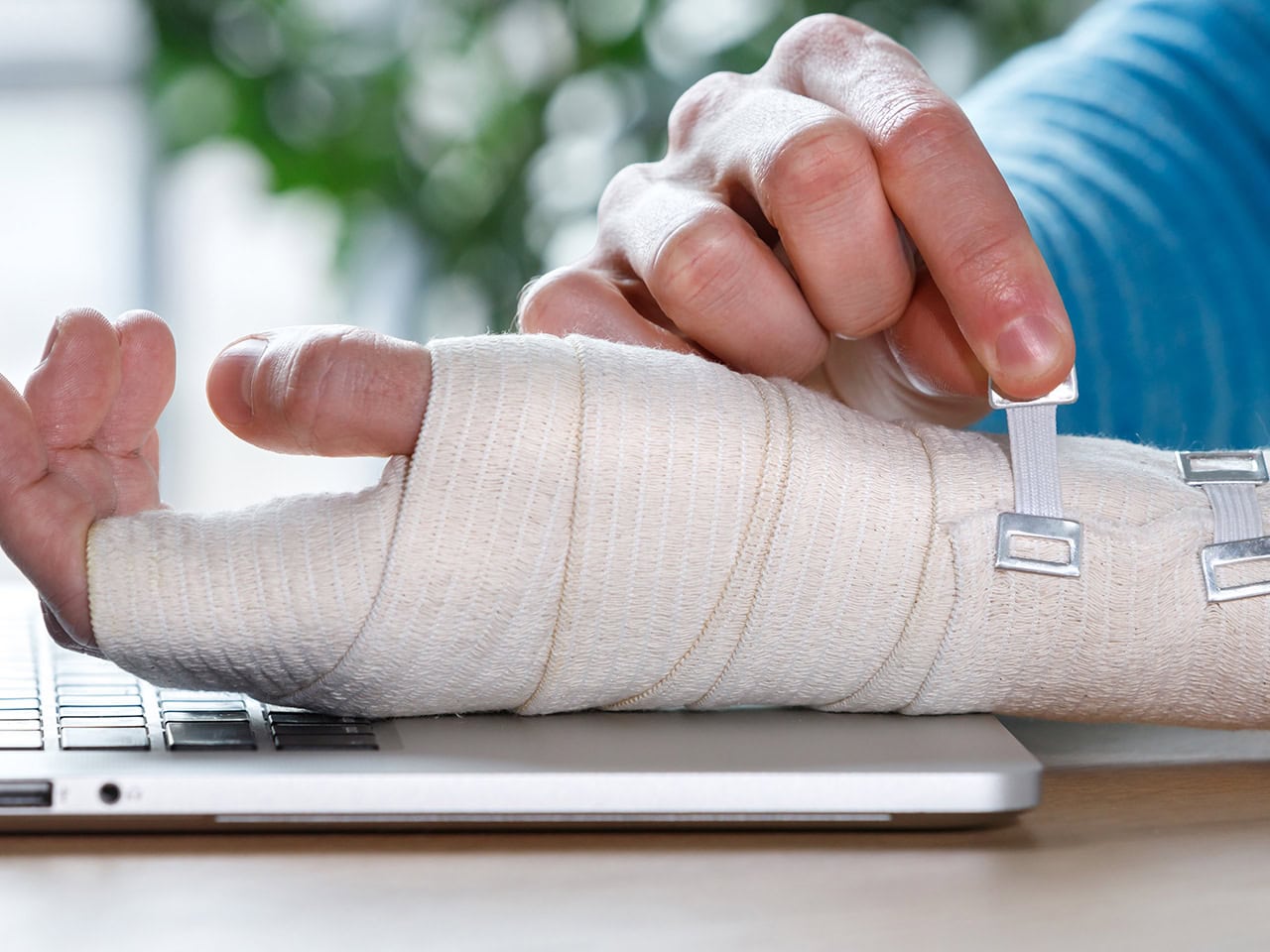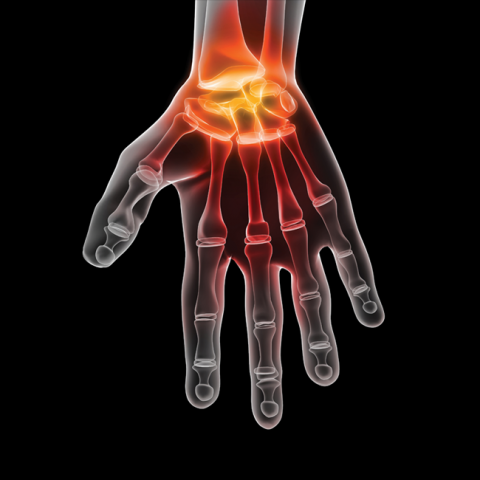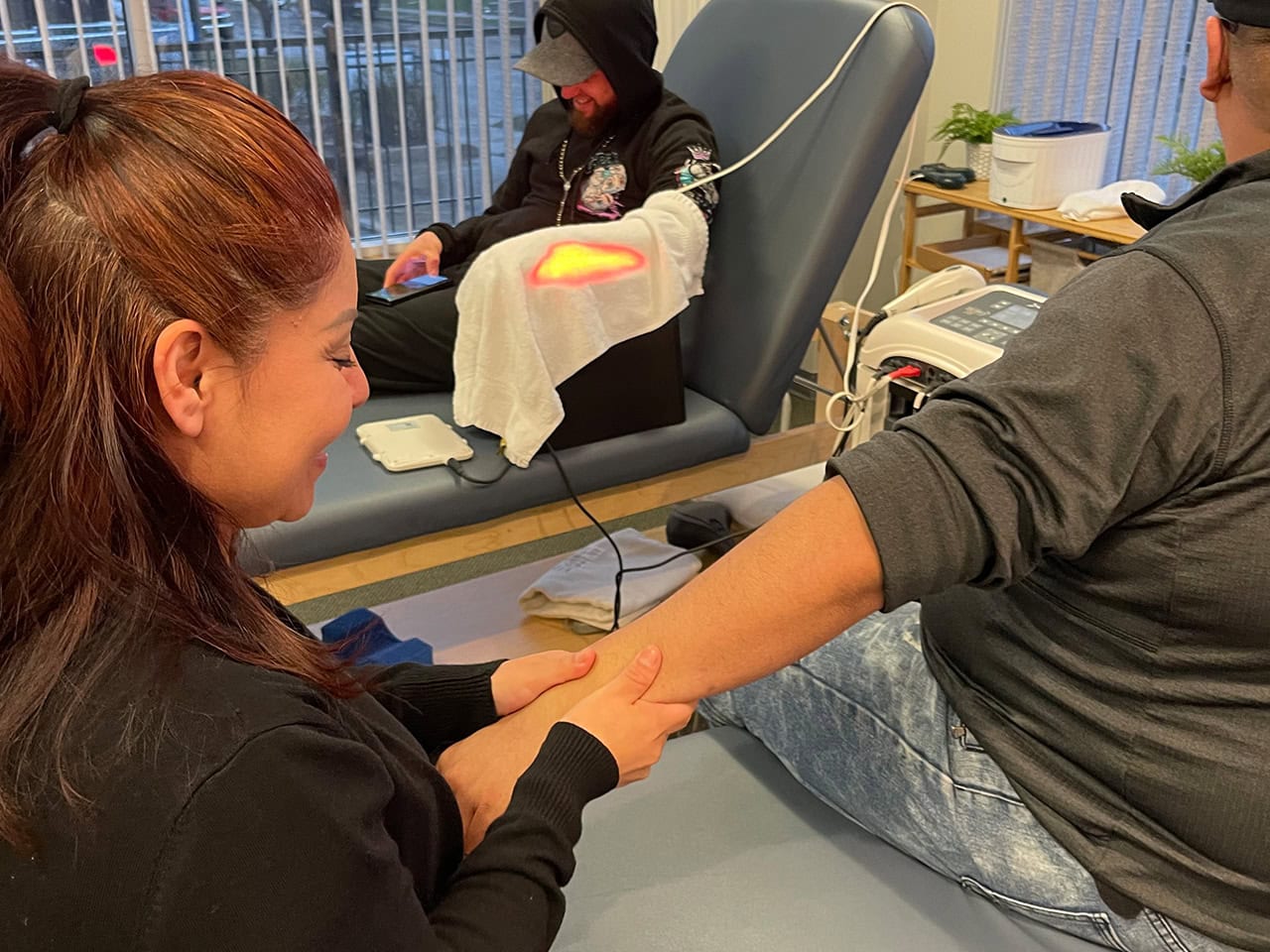
Wrist injuries are common following car accidents or workplace injuries, and they can cause significant pain and disrupt your daily life. These injuries can range from sprains and fractures to conditions like carpal tunnel syndrome, all potentially causing severe wrist pain. At Accident and Injury Rehab Center, our medical experts specialize in helping you recover from wrist injuries resulting from accidents or work-related incidents. This guide will provide you with essential information on the causes, symptoms, diagnosis, treatment, and prevention of wrist injuries specifically related to car accidents and work-related injuries.
Common wrist injuries caused by car accidents or workplace incidents can be especially painful, often due to the sudden impact or repetitive stress involved in these environments. Wrist injuries often occur when people put out their hand to break a fall. Other ways wrist injuries occur include:
In a car accident, the impact from a collision can cause whiplash or force your body to jerk, often leading to wrist injuries. Common ways wrist injuries occur during car accidents include:
In a workplace setting, wrist injuries can happen due to physical trauma or repetitive strain. Jobs that involve heavy lifting, operating machinery, or using hand tools can put significant stress on the wrists, leading to conditions like:
In both car accidents and workplace falls, your natural reflex may be to extend your hands to break the fall. Unfortunately, this often results in wrist fractures, as the bones in the wrist can’t always withstand the force of the impact. The severity of the fracture can range from a simple break to more complex fractures that may require surgical intervention.





Wrist injuries following a car accident or workplace injury can have a variety of symptoms, depending on the severity of the damage. Typically, wrist pain with bruising and swelling is often a sign of an injury. Identifying these symptoms early can help you receive the proper treatment and avoid long-term complications.
Wrist injuries are diagnosed through a thorough process that involves evaluating the symptoms, medical history, and using various diagnostic tests to determine the severity and cause of the injury. Here's a detailed breakdown of how wrist injuries are diagnosed:
By combining these examination methods and diagnostic tests, your healthcare provider can accurately determine the type and severity of your wrist injury. This ensures a targeted treatment approach, whether it's rest, physical therapy, bracing, or more invasive treatments like surgery.
With over 5 decades of collective experience, our staff brings a wealth of wisdom and insight to your injury treatment and medical documentation that supports your legal claim. Our experience and caring approach allows us to provide thorough treatment to address your injuries and get you on the road to recovery.
Double Board Certified Chiropractic Neurologist and Chiropractic Internist
Doctor of Physical Therapy
Chiropractic and Radiological Technician
Once diagnosed, appropriate treatment can be determined based on the patient’s injury type and severity:
For a sprained wrist, the RICE method (Rest, Ice, Compression, Elevation) is often recommended. Wrist sprains are common injuries, and over-the-counter pain relievers may help manage pain and swelling. More severe sprains may require the use of a splint or brace to immobilize the wrist.
Treatment for carpal tunnel syndrome includes:
Fractures often require immobilization with a cast or splint. Severe fractures may require surgical intervention to realign the bones. Post-treatment physical therapy helps restore strength, flexibility, and range of motion.
Strengthening exercises, such as wrist stretches, resistance band workouts, or using a stress ball, can improve wrist flexibility and reduce the risk of injury. Regular exercises to improve muscle tone and tendon strength are essential in supporting the wrist during daily tasks and physical activities.
Be mindful of your wrist posture while typing, using a mouse, or lifting objects. Ergonomic adjustments such as wrist supports, proper seating posture, and regular breaks can help reduce strain on your wrists and prevent injuries.
Treatment for carpal tunnel syndrome varies depending on the severity of the condition. Conservative treatments include wrist splints to prevent wrist motion during sleep and over-the-counter pain relief medications. In cases where symptoms persist, corticosteroid injections may be administered to reduce inflammation. If these measures fail, surgical intervention may be necessary to relieve pressure on the median nerve.
Caring for a broken wrist requires prompt medical attention. Treatment typically involves immobilizing the wrist with a cast or splint to ensure proper alignment and healing of the bones. Severe fractures may require surgical intervention to realign the bones. Physical therapy is often recommended post-treatment to restore strength and improve range of motion in the wrist.
Our team of experienced healthcare professionals provides expert diagnosis, treatment, and rehabilitation services to restore wrist health. We understand how challenging it can be to deal with pain and discomfort, especially when it interferes with your ability to perform daily tasks or return to work. That’s why we tailor our treatment plans to meet your unique needs and ensure that you receive the best possible care at every stage of your recovery.
The first step in your recovery journey is a thorough evaluation of your injury. Our medical team uses the latest diagnostic tools, such as X-rays, MRIs, and physical exams, to accurately assess the extent of your wrist injury. Whether you’ve suffered a sprain, fracture, or developed carpal tunnel syndrome due to repetitive work motions, we will pinpoint the cause of your pain and determine the most effective treatment plan.
We offer a variety of treatment options, all designed to address the specific type of wrist injury you're dealing with. Our treatments include:
At Accident and Injury Rehab Center, our goal is not just to treat your wrist injury but to help you regain full functionality so you can return to your everyday activities without pain or limitations. After your injury has been treated, our rehabilitation programs focus on strengthening your wrist, restoring flexibility, and preventing future injuries.
Our dedicated team will guide you through every phase of recovery, ensuring that your wrist is healing properly and that you're progressing at a pace that’s right for you. We also emphasize injury prevention, teaching you techniques and exercises to keep your wrist strong and healthy moving forward.
For more information about our services, contact us today to schedule an appointment or learn more about how we can help with your wrist injury recovery.
